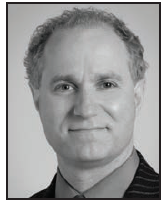



The following article highlights key questions addressed during a roundtable discussion of the role of personalized CONTOURA Vision topography-guided LASIK among today’s selection of refractive treatments. Led by Kerry D. Solomon, MD, the panel included Daniel S. Durrie, MD; Ronald R. Krueger, MD; and R. Doyle Stulting, MD, PhD.
When surgeons who are performing wavefront optimized, wavefront-guided, or standard procedures hear about CONTOURA Vision topography-guided LASIK, they want to know how it will help them with routine patients. Why should they consider choosing this approach over what they are already doing?
Ronald R. Krueger, MD: This is the newest form of customized laser vision correction, and it has advantages because the centration is different than what we have done before. Treatment is centered on the apex of the cornea. It is able to regularize the cornea better than any of the procedures available to date, and that gives us the best outcomes for our patients.
I think we have learned a lot from wavefront customization, which has been in many respects the standard way to improve vision for the last 10 years. Now we are taking it an increment further by delivering corneal wavefront. It is the same kind of information we might have about refraction and aberrations, but now we are treating the structure to get the ideal anterior surface of the cornea. If we optimize the corneal surface, we get the kind of results that will improve the optics of the rest of the visual system.
Daniel S. Durrie, MD: If a surgeon who is happy with the results of those procedures asked me, “Why do I need this?” I would ask about the success of their current treatments from a clinical and a business perspective. How have the outcomes of those procedures driven practice growth over the last couple of years? I do not think we can be satisfied with what we have if our market is not growing. Doctors need next-generation technologies. Yes, they require a financial investment, but our patients deserve a surgeon who keeps driving outcomes up to the next level. CONTOURA Vision topography-guided LASIK allows us to grow this market largely with the great tools we already have.
Clinically—even if the surgeon is living in the high-contrast acuity world, feels satisfied with the 20/20 rates, and does not have a lot of enhancements—I think he or she is missing those people who could go to the next level. We can give patients higher quality vision, for example, if we use all the tools at our disposal. CONTOURA Vision is another tool that helps us give patients the benefits of increased quality vision and correction of aberrations on the cornea that are asymmetry-based.
R. Doyle Stulting, MD, PhD: The scientific or the technical advantage of the CONTOURA Vision topography-guided procedure is that it is more reproducible. It reports more points in the cornea than wavefront does. It allows us to get readings for a larger area of the cornea. It avoids reading from inside the eye. It is immune to abnormalities that are created by lenticular aberrations. Finally, it is not affected by accommodation or affected by various types or intraocular opacities. Those are the reasons that the procedure is theoretically more accurate; results of the clinical trial show that its accuracy produces better visual outcomes.1
The clinical trial showed that CONTOURA Vision topography-guided LASIK resolves aberrations and visual complaints and has a lower rate of LASIK-induced symptoms compared to other approaches. Is that a key consideration for surgeons considering this approach?
Dr. Stulting: For laser users with a premium practice who want to offer their patients the best outcomes, the results of the CONTOURA Vision trial are illuminating. The trial showed that patients’ visual aberrations and complaints were lessened by the treatment.1 For the first time, we have an opportunity to say that patients who had this treatment have better uncorrected vision than their best-corrected vision with glasses or contact lenses before surgery.1 I want to offer this new option to patients in my practice.
I have been doing LASIK for nearly 20 years. We used to tell patients that the price they would pay for freedom from glasses would be some new visual aberrations. They could expect to have difficulty driving and possibly other issues. Now I can legitimately tell patients that based on the results of the clinical trial, it is likely that their visual aberrations will be lessened after treatment.1 Instead of losing vision, they may actually gain it. This is something that we have never been able to offer to patients before. I think that is why we need CONTOURA Vision topography-guided LASIK, even for normal eyes.
Kerry D. Solomon, MD: I think surgeons need CONTOURA Vision topography-guided LASIK to give their patients the opportunity for better uncorrected vision. The uncorrected vision results and other visual outcomes data are some of the best prospective study results I have seen to date in the literature. Improvement of visual symptoms means we are also making patients' quality of vision better. CONTOURA Vision topography-guided treatment offers better visual outcomes, reduced symptoms, and better quality vision, and therefore it should fit into everyone’s armamentarium, whether they choose to use it for all routine patients or select patients who would benefit the most.
1. Stulting RD, Fant BS; T-CAT Study Group. Results of topography-guided laser in situ keratomileusis custom ablation treatment with a refractive excimer laser. J Cataract Refract Surg. 2016;42(1):11-18.
Important Product Information